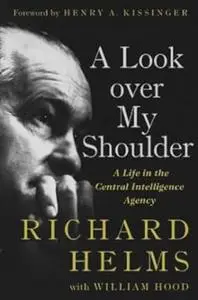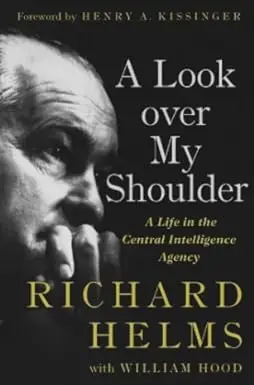William Hood, "A Look over My Shoulder: A Life in the Central Intelligence Agency"
English | 2003 | pages: 496 | ISBN: 037550012X, 0812971086 | EPUB | 5,3 mb
English | 2003 | pages: 496 | ISBN: 037550012X, 0812971086 | EPUB | 5,3 mb
A Look Over My Shoulder, by Richard Helms, begins with President Nixon’s attempt to embroil the Central Intelligence Agency, of which Helms was then the director, in the Watergate cover-up. Helms then recalls his education in Switzerland and Germany and at Williams College; his early career as a foreign correspondent in Berlin, during which he once lunched with Hitler; and his return to newspaper work in the United States. Helms served on the German desk at OSS headquarters in London; subsequently, he was assigned to Allen Dulles’s Berlin office in postwar Germany.
On his return to Washington, Helms assumed responsibility for the OSS carryover operations in Germany, Austria, and Eastern Europe. He remained in this post until the Central Intelligence Agency was formed in 1947. At CIA, Helms served as a division chief; as chief of operations for Frank Wisner; as deputy director for plans (operations); as deputy director; and, ultimately, as director, from 1966 to 1973. He was appointed ambassador to Iran later that year, and he retired from government service in January 1977.
A Look Over My Shoulder focuses on subjects such as intelligence collection, covert action, the uses and misuses of intelligence, and the problems secret intelligence encounters in an open society. Helms discusses
• working with Allen Dulles in Berlin in the early days of the Cold War.
• the amazing results of CIA’s Berlin tunnel operation, code name GOLD: “[Soviet officers’] unvarnished comments on the quality of Soviet military equipment, the intellectual capacity of fellow officers, and the wisdom of Moscow’s military policies were in more than one sense priceless.”
• the remarkable progress of high-altitude spying: “[The U-2 photographs] permitted resolution to some thirty inches—not quite enough to limn a football, as some press accounts have suggested, but quite good enough to spot a Soviet soldier perched on an open privy a discreet two hundred yards from [a guided missile] site in Cuba.”
• his relationship with presidents and other key figures of the Cold War: After an Air Force briefing on the destruction of the electric grid in North Vietnam, LBJ’s only question to Helms was “Are the lights on in Hanoi?”; J. Edgar Hoover once offered Helms “a forty-five-minute uninterrupted history of the FBI in peace and war.”
• how President Nixon attempted to embroil CIA in the Watergate cover-up: “The telephone call that set in motion the events that would eventually end my intelligence career came as I was preparing for bed, Saturday, June 17, 1972. . . . ‘I’ve just learned that the District police have picked up five men in a break-in at the Democratic Party National Headquarters at the Watergate.’”
It was often thought that Richard Helms, who served longer in the Central Intelligence Agency than anyone else, would never tell his story, but here it is—revealing, news-making, and with candid assessments of the controversies and triumphs of a remarkable career.
My Link



